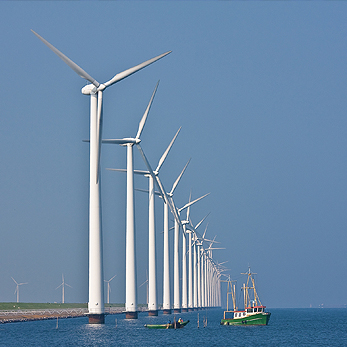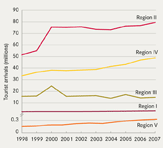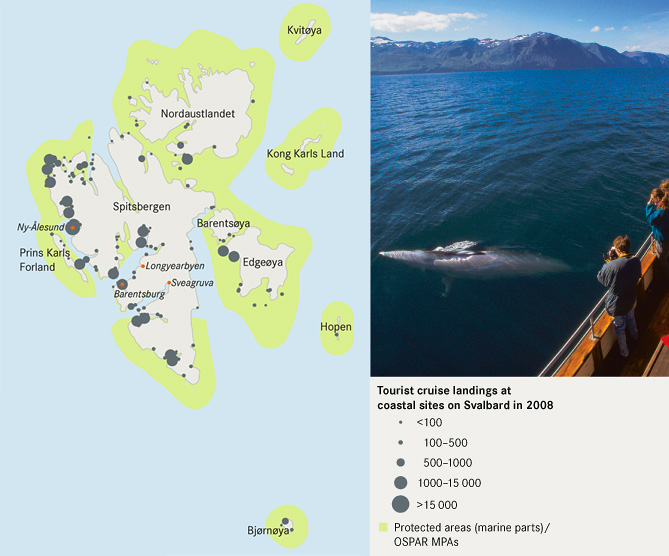Many coastal areas in the North-East Atlantic are popular holiday destinations. Since the 1990s, the total number of tourists visiting the OSPAR Regions has increased steadily, growing from around 100 million in 1998 to around 146 million in 2007 Figure 9.6. There are continued increases in coastal infrastructure, including for accommodation and service, and an increasing demand for resources, especially in Region IV, the southern part of Region II and parts of Region III.
The growth of tourism has increased pressure on natural areas and fragile ecosystems, such as dunes, cliffs and wetlands. Tourism also contributes to pollution, marine litter and coastal erosion. Beach tourism and recreational boating are widespread forms of coastal or sea-based tourism and have direct effects on marine species and habitats. Cruise tourism has steadily increased and is expected to continue growing. Other recreational activities that can put pressure on the marine environment include scuba-diving, angling and whale-watching.
A particular concern is habitat fragmentation caused by tourism-related development, especially along the coasts of Regions II and IV. Another concern is the disturbance of beach-dwelling species by tourists during the breeding season. For example, the little tern has suffered reduced breeding success in the southern North Sea. Seagrass meadows (Zostera sp.), which OSPAR has identified as a habitat in need of protection, are impacted by recreational boating, both from frequent anchoring and from dredging to increase water depth. The growing attraction of remote areas as tourist destinations, including in the Arctic, puts these relatively pristine areas under pressure.
OSPAR is working to address some of the main impacts from activities associated with tourism, such as nutrient inputs from sewage Chapter 4, effects of dredging and marine litter. Efforts to comply with the EU Bathing Water Directive provide a focus for water quality in coastal areas. OSPAR countries have also undertaken various actions to preserve their coasts from excessive development. These have been supported by the designation of Natura 2000 sites, OSPAR marine protected areas (MPAs) and national marine parks Chapter 10. The European Commission’s proposed strategy on Integrated Coastal Zone Management (ICZM) and the recommendation of the European Parliament and the Council concerning the implementation of ICZM could contribute to minimising impacts on the marine environment while supporting sustainable tourism, if effectively implemented. In this context, implementing marine and coastal spatial planning policies, the use of guidelines and principles for sustainable tourism, and the designation and management of protected areas should be encouraged. OSPAR should keep under review the extent of impacts from tourism-related pressures as the industry develops further.



